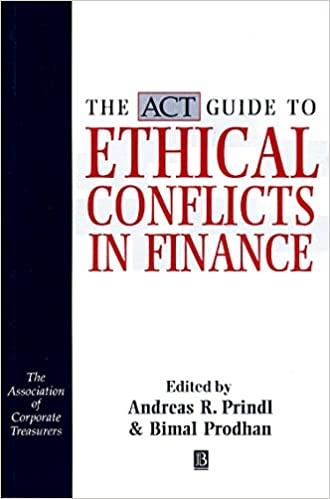Question
4. The IRR evaluation method assumes that cash flows from the project are reinvested at the same rate equal to the IRR. However, in reality
4.
The IRR evaluation method assumes that cash flows from the project are reinvested at the same rate equal to the IRR. However, in reality the reinvested cash flows may not necessarily generate a return equal to the IRR. Thus, the modified IRR approach makes a more reasonable assumption other than the projects IRR.
Consider the following situation:
Cold Goose Metal Works Inc. is analyzing a project that requires an initial investment of $500,000. The projects expected cash flows are:
| Year | Cash Flow |
|---|---|
| Year 1 | $275,000 |
| Year 2 | 125,000 |
| Year 3 | 450,000 |
| Year 4 | 450,000 |
Cold Goose Metal Works Inc.s WACC is 8%, and the project has the same risk as the firms average project. Calculate this projects modified internal rate of return (MIRR):
17.47%
20.55%
19.52%
21.58%
If Cold Goose Metal Works Inc.s managers select projects based on the MIRR criterion, they should this independent project.
Which of the following statements best describes the difference between the IRR method and the MIRR method?
The IRR method uses only cash inflows to calculate the IRR. The MIRR method uses both cash inflows and cash outflows to calculate the MIRR.
The IRR method assumes that cash flows are reinvested at a rate of return equal to the IRR. The MIRR method assumes that cash flows are reinvested at a rate of return equal to the cost of capital.
The IRR method uses the present value of the initial investment to calculate the IRR. The MIRR method uses the terminal value of the initial investment to calculate the MIRR.
Step by Step Solution
There are 3 Steps involved in it
Step: 1

Get Instant Access to Expert-Tailored Solutions
See step-by-step solutions with expert insights and AI powered tools for academic success
Step: 2

Step: 3

Ace Your Homework with AI
Get the answers you need in no time with our AI-driven, step-by-step assistance
Get Started


